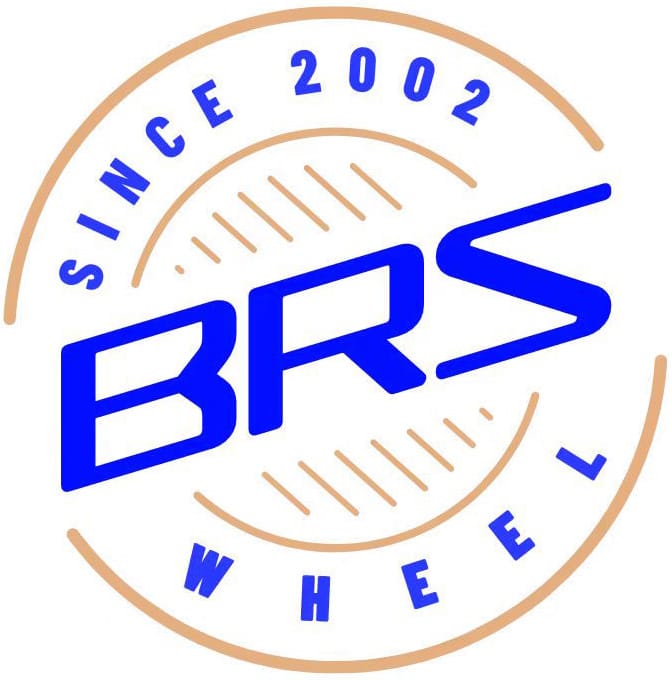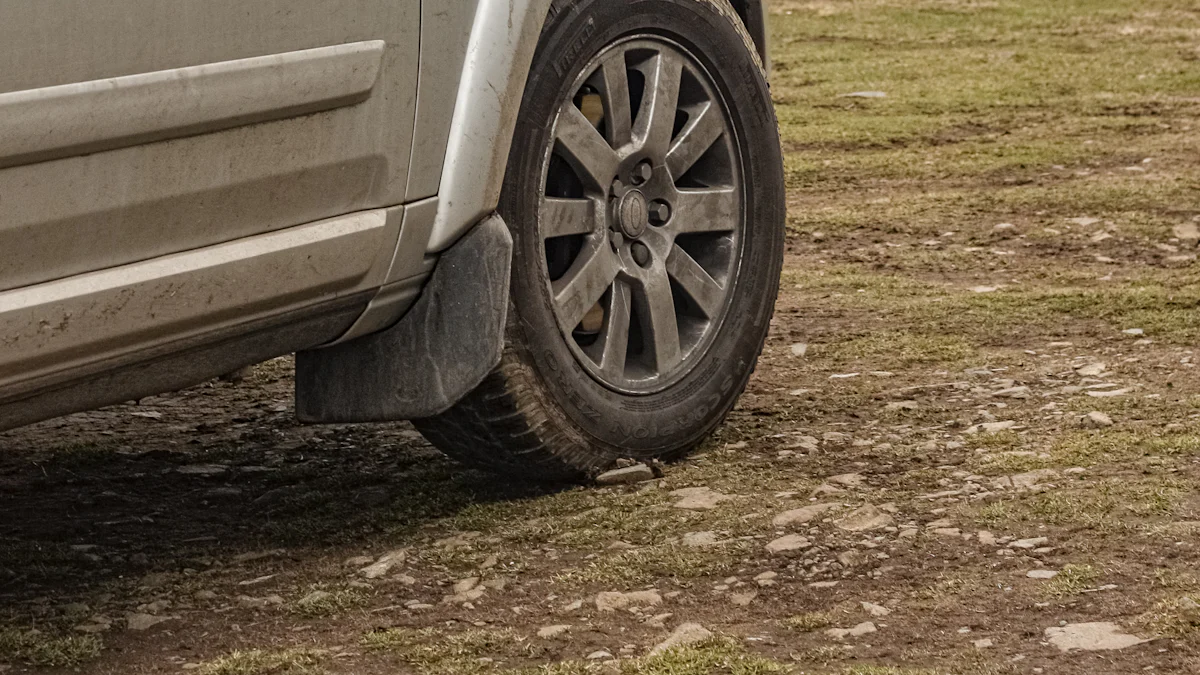
Choosing the right spreader can make all the difference when maintaining your lawn. A well-suited spreader wheel ensures smooth operation and better results. Whether you’re tackling uneven terrain or heavy loads, the right choice boosts efficiency. With the right wheel, you’ll save time and achieve a healthier, greener lawn.
Compatibility with Your Spreader
When choosing a spreader wheel, compatibility with your spreader is the first thing you should check. A mismatch can lead to poor performance or even damage to your equipment. Let’s break down the key factors to consider.
Understanding Manufacturer Specifications
Start by reviewing the manufacturer’s specifications for your spreader. These details often include recommended wheel types, axle sizes, and weight capacities. Manufacturers design their equipment with specific performance metrics in mind, such as HSF (Highest Spreading Force) and HPF (Highest Pulling Force). These metrics ensure the wheel can handle the demands of your spreader. Always prioritize tools tested in real-world conditions rather than relying solely on simulated data. This ensures your spreader performs well on your lawn, whether you’re using a broadcast fertilizer spreader or a drop spreader.
Measuring Axle Size and Wheel Dimensions
Accurate measurements are crucial. Use a tape measure to determine the axle diameter and wheel dimensions of your spreader. A wheel that’s too small or too large can cause instability or uneven spreading. For example, if you’re working with a lawn fertilizer spreader, the wrong wheel size might make it harder to maneuver across your lawn. Double-check these measurements against the specifications to avoid any surprises.
Evaluating Weight Capacity and Load Requirements
Weight capacity is another critical factor. Spreader wheels come with varying load limits, so you’ll want to match the wheel to your spreader’s needs. For instance, an 80 lbs. estate-grade spreader with pneumatic wheels is ideal for heavy-duty tasks. If you’re spreading fertilizer or seeds across a large area, ensure the wheel can handle the load without compromising performance. This is especially important for broadcast spreaders, which often carry heavier loads compared to smaller models.
By focusing on these aspects, you’ll ensure your spreader wheel fits perfectly and delivers optimal results.
Material and Durability of Spreader Wheels

Comparing Steel, Rubber, and Plastic Wheels
When it comes to spreader wheels, the material plays a huge role in performance and longevity. Steel wheels are known for their strength and durability. They’re perfect for heavy-duty tasks and can handle rough terrains with ease. If you’re using a broadcast spreader on uneven ground, steel wheels might be your best bet. Rubber wheels, on the other hand, offer excellent traction and a smoother ride. They’re great for lawns with softer soil or areas prone to slipping. Plastic wheels are lightweight and affordable. They work well for smaller tasks or when using a drop spreader on flat surfaces. However, they may not hold up as well under heavy loads.
Weather Resistance and Longevity
Weather can take a toll on your spreader wheel. Steel wheels resist wear and tear but may rust if not coated properly. Look for powder-coated options to prevent corrosion. Rubber wheels handle wet conditions better and won’t crack easily in the sun. Plastic wheels are less weather-resistant and can become brittle over time. If you’re working in extreme climates, choose a material that matches your spreader capacity and durability needs.
Durability for Frequent or Heavy-Duty Use
If you use your spreader often or for heavy-duty jobs, durability is key. Steel wheels are built to last and can support larger loads. Rubber wheels are durable too, especially for frequent use on lawns. Plastic wheels might not withstand repeated use or heavy weights. Always match the wheel material to your workload for the best results.
Size and Terrain Suitability

Selecting the Right Wheel Size for Your Terrain
The size of your spreader wheel plays a big role in how well it performs on your lawn. Larger wheels are better for uneven or rough terrain. They roll over obstacles like rocks or roots more easily, giving you a smoother experience. Smaller wheels work best on flat, even surfaces. They’re easier to maneuver and are perfect for smaller lawns or gardens. If you’re using a broadcast spreader, larger wheels can help distribute materials evenly across wide areas. For a drop spreader, smaller wheels might be more practical since they offer better precision. Always match the wheel size to the type of terrain you’ll be working on.
Tread Patterns for Grip and Stability
The tread pattern on your spreader wheel affects how well it grips the ground. Different patterns are designed for specific conditions:
- Tread Blocks: Large, aggressive blocks provide excellent grip in muddy or loose soil.
- Self-Cleaning Design: Some treads remove mud and stones as you go, keeping traction consistent.
- Tread Pattern Variation: Patterns tailored for rocky, sandy, or wet surfaces improve performance in those conditions.
- Climate Considerations: Deep grooves work well in wet climates, while less aggressive treads suit dry areas.
If you’re spreading materials on a slippery or uneven lawn, look for wheels with deep, self-cleaning treads. They’ll keep you steady and prevent slipping.
Performance on Uneven or Slippery Surfaces
Uneven or slippery surfaces can make spreading tricky, but the right wheel can help. Steel wheels with aggressive treads handle rough terrain like a pro. Rubber wheels offer better traction on wet or slippery lawns, reducing the risk of skidding. If your lawn has steep slopes or loose soil, choose a wheel designed for stability. For example, a broadcast spreader with large, treaded wheels can handle uneven ground while maintaining even distribution. Always test the wheel’s performance on your terrain before committing to a purchase.
Balancing Cost and Quality
Setting a Budget for Your Spreader Wheel
Setting a budget is one of the first steps when choosing a spreader wheel. Think about how much you’re willing to spend and what features matter most to you. Are you looking for something durable for heavy-duty tasks or a more affordable option for occasional use? A clear budget helps you narrow down your choices and avoid overspending. For example, if you’re into lawn care and need a wheel for frequent use, investing in a high-quality option might save you money in the long run. On the other hand, if you only use your spreader occasionally, a budget-friendly wheel could work just fine.
Comparing Prices and Features Across Brands
Once you’ve set your budget, compare prices and features across different brands. Look for wheels that offer the best value for your money. Some brands might charge more but include features like better tread patterns or weather-resistant materials. Others might focus on ease of use and maintenance, which can save you time and effort. If you’re using a broadcast spreader, check if the wheel provides smooth performance on your lawn. Reading product descriptions and reviews can help you spot the best fertilizer spreader wheels that fit your needs.
Warranty and Customer Support Considerations
A good warranty can make a big difference. It shows that the manufacturer stands behind their product. Look for spreader wheels with warranties that cover defects or performance issues. Also, consider the quality of customer support. If something goes wrong, you’ll want a company that’s easy to reach and willing to help. Brands that prioritize customer satisfaction often provide better long-term value. Whether you’re using a broadcast spreader or a drop spreader, knowing you’re covered gives you peace of mind.
Balancing cost and quality doesn’t have to be tricky. By setting a budget, comparing features, and checking warranties, you can find a spreader wheel that works for your lawn and your wallet.
Additional Tips for Choosing the Right Spreader
Reading Product Reviews and Ratings
Before buying a spreader wheel, take a few minutes to read product reviews and ratings. These can give you valuable insights into how well a wheel performs in real-world conditions. Look for reviews from people who have similar needs, like spreading fertilizer on uneven terrain or maintaining a large lawn. Pay attention to comments about durability, ease of use, and maintenance. If you’re considering a broadcast fertilizer spreader, check if users mention smooth operation and even distribution. Reviews often highlight issues you might not notice at first glance, helping you avoid costly mistakes.
Consulting Professionals or Retailers
If you’re unsure about choosing the right spreader wheel, don’t hesitate to ask for help. Lawn care professionals or knowledgeable retailers can guide you toward the best option. They’ll often ask questions like, “What’s the size of your lawn?” or “What type of terrain are you working with?” This helps them recommend wheels that match your needs. Whether you’re using a broadcast or drop spreader, their expertise can save you time and effort. Plus, they might suggest brands or models you hadn’t considered.
Testing the Wheel Before Purchase
Whenever possible, test the wheel before buying it. This step ensures the wheel fits your spreader and performs well on your lawn. Roll it over different surfaces to see how it handles obstacles like rocks or uneven ground. Assess your lawn size and terrain to determine if the wheel’s size and tread pattern are suitable. Testing also helps you gauge ease of use and maintenance. For example, if you’re working with types of lawn spreaders like a broadcast model, make sure the wheel provides smooth movement and stability. A quick test can prevent future headaches.
Choosing the best spreader wheel doesn’t have to feel overwhelming. Focus on a few key factors to make the right choice:
- Match the wheel to your spreader’s compatibility and weight capacity.
- Pick durable materials that suit your terrain and weather conditions.
- Balance cost with quality to get the most value.
Take time to research, compare options, and test the wheel. By doing this, you’ll find one that fits your needs perfectly and delivers long-term results.
FAQ
What is the difference between a broadcast spreader and a drop spreader?
A broadcast spreader scatters materials over a wide area, while a drop spreader releases them directly beneath. Use a drop spreader for precision on smaller lawns.
How do I maintain my spreader wheels for long-term use?
Clean your wheels after every use. Remove debris and check for wear. For steel wheels, apply a rust-resistant coating. This keeps your drop spreader running smoothly.
Can I use the same wheels for all types of terrain?
Not always. Larger wheels with deep treads work best on rough terrain. Smaller wheels suit flat surfaces. Match your wheel type to your drop spreader and lawn conditions.
- Posted In:General






